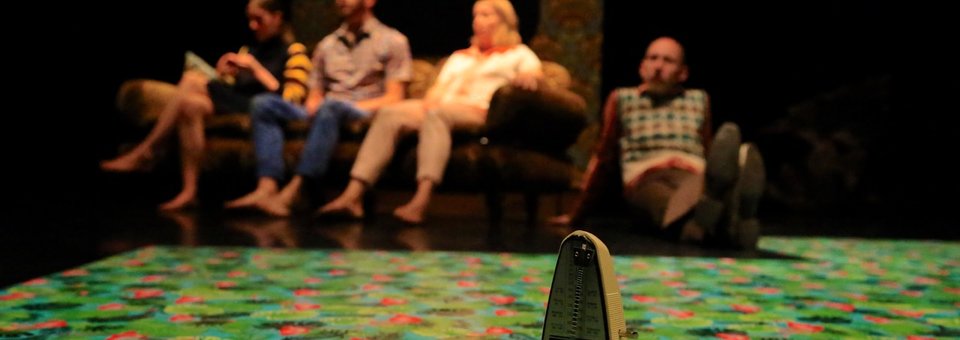
Concept/choreography: Francesco Scavetta.
Original version created in collaboration with: Gry Kipperberg, Erikk McKenzie, Orfee Schuijt, Thomas Vantuycom.
Touring version performed by: Gry Kipperberg, Erikk McKenzie, Orfee Schuijt/Sigrid Kittelsaa Vesaas, Luke Divall/Thomas Vantuycom
Dramaturge: Sasa Bozic.
Costume design: Gjøril Bjercke Sæther.
Stage: Francesco Scavetta, Gjøril Bjercke Sæther and Per-Anders Karlsson.
Light design: Stefano Stacchini.
Sound design: Tormod Friis Pettersen, Kevin Sandman.
Production: Wee.
Co-production: Dansens Hus.
In collaboration with: Vitlycke-Centre for performing arts, Göteborg Dans & Teater Festival and WASP/4Culture Bucharest.
Supported by: Arts Council Norway and Fond for lyd og bilde.
- 27. Sep 2018 Leeds, UK
- 05. Apr 2018 Vancouver, Canada
- 16. Nov 2017 Uddevalla, Sweden
- 10. Nov 2017 Tanumshede, Sweden
- 08. Nov 2017 Gothenburg, Sweden
- 03. Nov 2016 La Habana (Cuba)
- 08. Jun 2016 Riga (Latvia)
- 16. May 2016 Tanumshede (Sweden)
- 13. May 2016 Gothenburg (Sweden)
- 26. Apr 2016 Kyoto (Japan)
- 15. Apr 2016 Trondheim (Norway)
- 06. Nov 2015 Bucharest (Romania)
- 03. Oct 2015 Oslo (Norway)
- 30. Sep 2015 Oslo (Norway)
- 25. Sep 2015 Tanumshede (Sweden)
“Hardly ever” explores the notion of truth and lies in theatre and everyday experience, bringing forward an investigation started with “Sincerely yours” (2008-09).
The work plays with the gap between creating expectations and allowing the unexpected. Presenting the juxtaposition of physical responses to verbal statements, where the slight mismatch opens for new associations. Involving the body as cartography of the space and using the voice, singing and talking, with a significant text that informs with its meanings and affects for what it evokes .
In “Hardly ever” the body of the performer is understood as a fiction upon which an endless multiplicity of possible body fictions and concepts could be written and become visible through their articulation in movement. The performance focuses on the transformative capacity of the performers, being in a state of flux and constantly re-negotiating their own creation in the eyes and ears of the audience members, allowing the spectator to engage in their own associative process. “Do you believe in what I say or in what I show?” .
The space that surrounds the performers provides a platform for undefined expression, an experimental playground where the dancers lay out memories, listing questions and mapping the space, while constructing various instant physical identities and body fictions. A visionary cartography that unlocks and formulate meanings, creating bridges between here and there, connecting forms with meanings that we did not know were previously connected.
How to allow and encourage the body to work in ways that are new, questionable, doted and non-efficient? What does this mean for the spectator’s gaze and how do we confront the spectator with the production of something beautiful, poetical but, at the same time, revealed as a fiction or lie?













